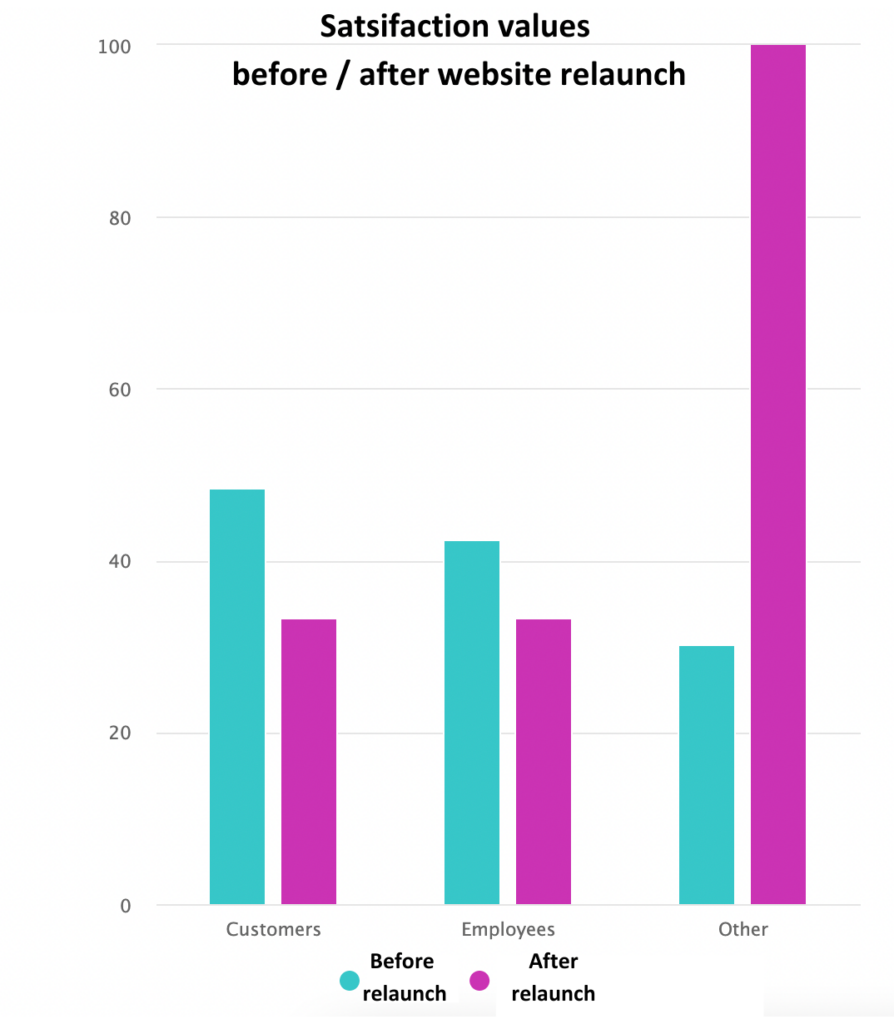Table of Contents
What’s the link between EX and CX?
Though they are often considered as two separate entities, the link between customer experience (CX) and employee experience (EX) is undeniable. Companies aim to increase customer satisfaction to combat declining customer loyalty but staff shortages and high fluctuation rates also mean companies are more interested in employee satisfaction than ever before. Some analysts even predict that CX and EX will merge into a “total experience”. However, the connection between the two spheres, which seems so obvious, is not so easy to prove.
Essentially, the connection between employee satisfaction and economic success is quite clear: Happy employees make for happy customers! We know from our own experience that we immediately feel at home when restaurant staff serves us in a friendly and respectful manner. And of course, then we order a glass or two more of wine – because it just feels so splendid here!
But this typical service in restaurants applies to every other industry, and even to the B2B world. A Gallup study proves this quite clearly. In conclusion: ultra-successful companies have both high employee and customer satisfaction.
And these companies boast impressive metrics compared to their competitors:
- They have more engaged employees than average, who are up to 18% more productive and show lower turnover rates
- Their sales figures are 18% higher than average and show higher customer satisfaction.
- And, companies with high employee engagement are also 23% more profitable than comparable companies.
This means that even if spending on employee engagement and satisfaction appears to be a ‘cost’ at first glance, it is actually an investment in the company’s growth strength and profitability.
Link between EX and CX difficult to prove
But the devil is in the details. For example, research from the University of Oxford, published in May 2023, found that there is indeed a positive relationship between corporate culture and business results.
However, this data should also be treated with caution, as it is often based on too small a sample of companies that are already particularly agile and fast, or on indirect parameters. Finally, these studies only establish the link between employee experience and business success. They say nothing about the fact that companies that invest in employee experience are more successful.
But do these companies really deliver a better customer experience? Again, data is scarce – and often collected only indirectly. And: What might such a “total experience” actually look like?
A B2B example of a Total Experience
Let’s imagine: A B2B company wants to launch a self-service eCommerce project. Of course, a lot of work needs to be done to ensure an optimal customer experience: The sales process must be well-designed, the checkout must work, and the order must be connected to the CRM or ERP.
BUT: This checkout process has to involve the people “behind the system”. And that’s where they often fall short: bypassing existing processes or adding new manual activities.
A positive employee experience in this context would be to design the new customer experience from the capabilities of the employees involved – and to give them powerful tools for all their activities.
Then everything goes hand in hand. And we have a total experience. And of course, if everything is running smoothly in the background, that is clearly a competitive advantage for the company.
You may not be able to prove it with the “one number”, but it is obvious.
How to measure customer satisfaction and employee engagement in your company
If employee engagement and customer satisfaction are so closely related, why are both ‘drivers’ often viewed in such isolation? Technically and organisationally, a joint view of CX and EX is possible and can offer deep insights. The key to this is the systematic collection of feedback, for example, through our survey tool Netigate:
- To do this, first, define a common feedback journey for both employee engagement and customer satisfaction. Write down when and where you want to launch each survey. Clarify the questions and make sure to select appropriate metrics (e.g., NPS software or eNPS software) to measure your success.
- Then, launch the surveys in the survey tool Netigate. The distribution capabilities and logics are ideal for both external and internal stakeholders and can even safely handle highly sensitive data.
- Finally, receive meaningful reports, with data that you can easily correlate e.g. via Excel or with the help of the Netigate consulting team.

For example, this screenshot shows a satisfaction analysis with digital tools among employees, customers and other stakeholders of a company before and after a website relaunch. While both core groups, employees and customers, are almost equally critical of the relaunch, the approval of the other stakeholders has skyrocketed. Did a design change take place here without paying attention to usability in both the backend and frontend?
Pay attention to employee and customer satisfaction simultaneously. The first step is to systematically collect and use feedback.
Do you want to find out how to improve the link between your customer and employee satisfaction? Try out our CSAT survey tool or have a look at our VoE software with the Netigate 30 day free trial here.
-
Helena Bjorkman
-
Helena Bjorkman
- 4 min read
- .







 Copyright © 2025 Netigate AB, Drottninggatan 25, 111 51, Stockholm, Sverige
Copyright © 2025 Netigate AB, Drottninggatan 25, 111 51, Stockholm, Sverige